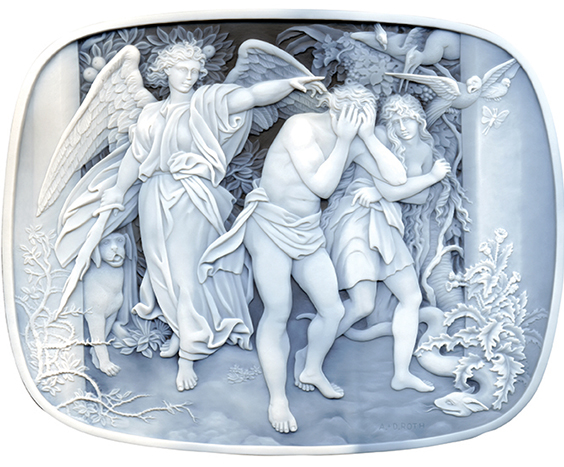
By Bruce McKay
In a Western Germany valley between Frankfurt and Luxembourg is the town of Idar-Oberstein, the heart of the gemstone industry. Long past its glory days of being the main source of cut gems in the world, it remains home to some of the worlds finest gem cutters – gem cutters whose exceptional skills have been passed down through the generations of families like the Roth family of Idar-Oberstein.
Exploring Ida-Oberstein’s Carving History
Before I share a bit about my enlightening visit with the Roth family, let’s examine the fascinating history of the Idar-Oberstein community. Idar and Oberstein were once two towns a short walk from each other and have now merged into one. In the hills above were deposits of agate, citrine, and amethyst while through the valley floor flows the Nahe River. This gave the locals material to work with and the power (through water wheels) to run their cutting workshops.
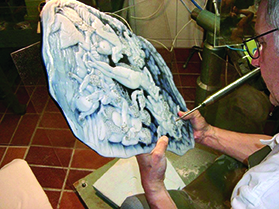
Farmers would work their fields in the summer, and in winter they would enter the mines to find the rough gem material. For more than 500 years this cutting industry grew, becoming the primary economy of the town. With water wheels lining its shores, the Nahe River was at one time the most heavily industrialized river in the world. At the peak of the cutting industry, more than 25,000 locals were involved with gem cutting.
By the late 1800s, the mines were becoming depleted, the economy was doing poorly, and many people left town to find their fortunes in the new world. Some of them landed in Brazil and there they saw local agates, which were huge in comparison to the agates back home. Soon they were exporting these big, plentiful agates back to Germany, and the Idar-Oberstein cutting industry was revitalized. The region’s industry entered its most prolific time, exporting its cut gems all over the world. Local companies set up cutting factories overseas and, eventually, the lower cost of overseas cutting led to the closure of many local factories.
Slab Cutting Culture
The cutting industry has always had specialization and that specialization has helped keep the local operations going. Some businesses are rough material importers, some shops color the agate with dyes, some slab the rough, and still others provide raw slabs to the cutters and cameo carvers. Bowl cutting shops carve beautiful bowls of agate and other gems, sometimes leaving the inside of a banded agate bowl carved down to the interior white banding, ready to be sent to the cameo carvers who carve cameo scenes inside the bowls.
Some shops cut animal figures out of agate and other gems,
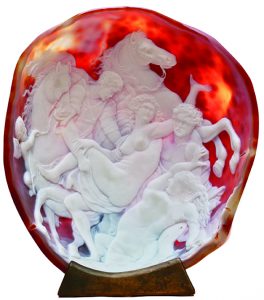
beautifully detailed down to the individual fur hairs. Some factories and individual cutters also facet gems for the jewelry industry. One common thread among these specialized shops is the excellent quality of craftsmanship, something that has always set Idar-Oberstein apart from others. Among the finest examples of this tradition is the Roth family.
Currently cameo carvers, the family members can trace their gem connections back to their great-great-grandfather Philipp Roth. An agate cutter, he passed his skills onto his son August Roth. Walter Roth, the son of August, learned to cut diamonds and was an esteemed diamond cutter from 1907 until 1957. That takes us to today’s cameo carving Roths, Dieter and his son Andreas.
A Study In Trades
Dieter began his apprenticeship with the world-renowned gem engraver and cameo carver Richard Hand. He worked at Hand’s workshop for 15 years, achieving Master Craftsman status. In time, he began working for himself, carving agate cameos and engraving in stone. Usually, he would design and create a piece all on his own and other times he would work with additional craftsmen as a piece might involve multiple shops: the dye shop, stone carver, goldsmith, stone engraver.
Dieter came to be known for doing large agate cameos with multiple full figures, not just faces. His artistic credits include the largest gemstone cameo in the world, the Faust Cameo. In addition, he has done themed series of cameos, such as a dozen large pieces with Biblical scenes. As the years went on, he worked in partnership with his son Andreas, and a few years ago he retired from working in his shop, turning over the family legacy to his son.
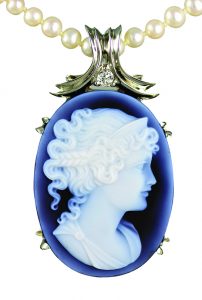
(Photo courtesy Bruce McKay)
Idar-Oberstein used to have a School of Lapidary Arts where Andreas Roth studied and graduated before he entering an apprenticeship. His test piece at the end of his apprenticeship was good enough to win first place in the Rhineland-Palatinate competition, and he has gone on to win other awards for his combination of skill and artistry.
Next Generation of Gem Cutters and Carvers
He continues to create pieces in the style of his father: bowls and flat pieces with multiple figures, usually based on a theme such as the story of life or scenes from classical history. But Andreas has begun to also do work that breaks from traditional style and expresses his modern sense of artistry, in combination with the finest craftsmanship. He accepts commissions such as doing a cameo based on a photograph or theme supplied by the customer. There are signs there may be another generation of Roth carvers, as Andreas’ 12-year-old daughter comes into the workshop regularly to do her own gem cutting.
The work of Dieter and Andreas can be seen in both of the museums in Idar-Oberstein: the Deutsches Edelsteinmuseum and the Deutsches Mineralienmuseum.
For more information about the Roth family of carvers, visit www.roth-cameo.com, or on Facebook at www.facebook.com/Roth-Cameo-289775661042345.
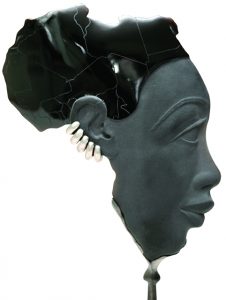
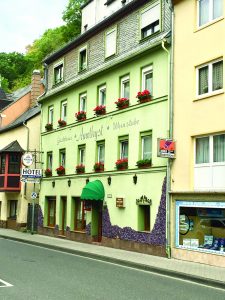


(Photo courtesy Bruce McKay)















